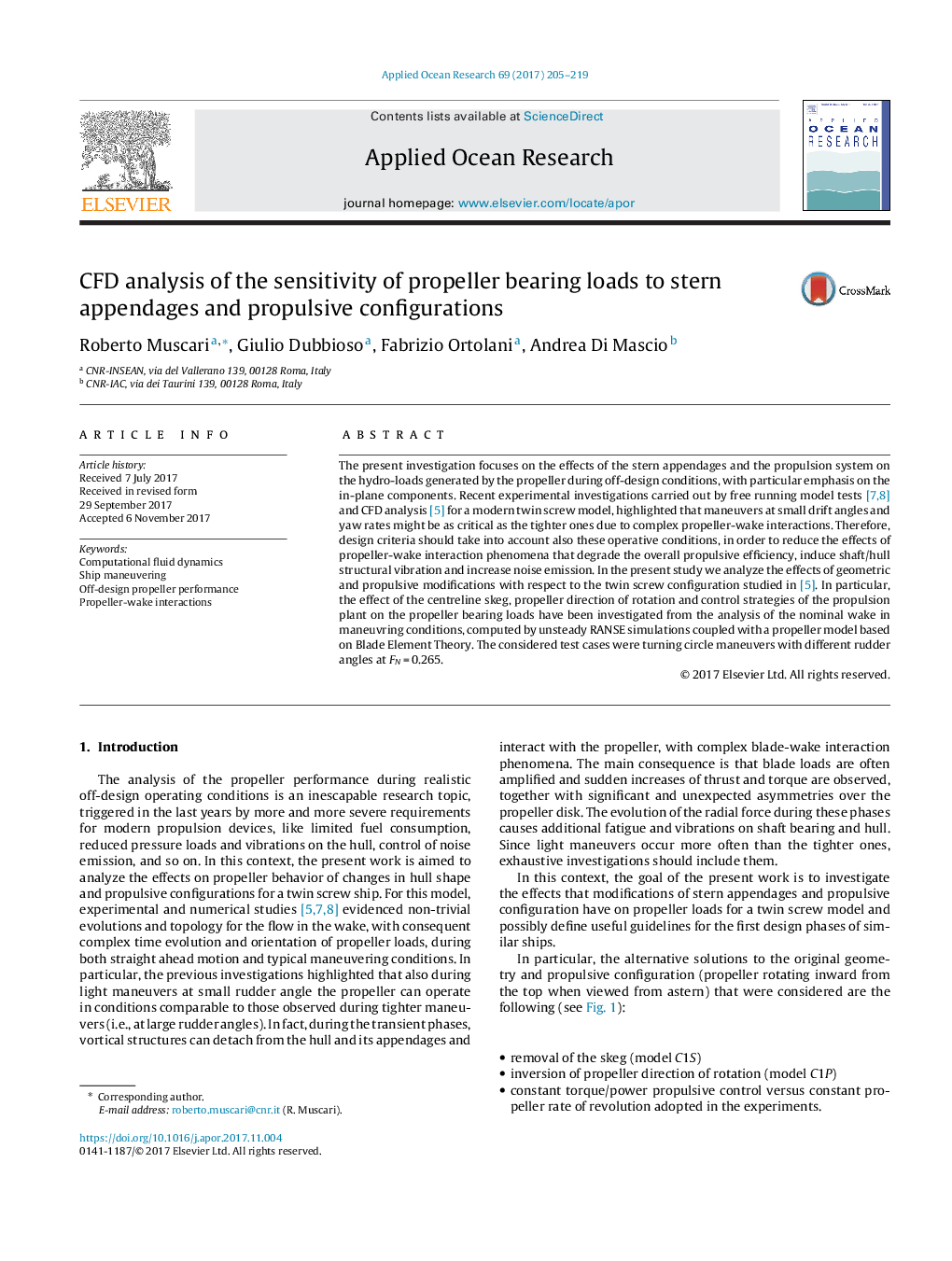| Article ID | Journal | Published Year | Pages | File Type |
|---|---|---|---|---|
| 8059361 | Applied Ocean Research | 2017 | 15 Pages |
Abstract
The present investigation focuses on the effects of the stern appendages and the propulsion system on the hydro-loads generated by the propeller during off-design conditions, with particular emphasis on the in-plane components. Recent experimental investigations carried out by free running model tests [7], [8] and CFD analysis [5] for a modern twin screw model, highlighted that maneuvers at small drift angles and yaw rates might be as critical as the tighter ones due to complex propeller-wake interactions. Therefore, design criteria should take into account also these operative conditions, in order to reduce the effects of propeller-wake interaction phenomena that degrade the overall propulsive efficiency, induce shaft/hull structural vibration and increase noise emission. In the present study we analyze the effects of geometric and propulsive modifications with respect to the twin screw configuration studied in [5]. In particular, the effect of the centreline skeg, propeller direction of rotation and control strategies of the propulsion plant on the propeller bearing loads have been investigated from the analysis of the nominal wake in maneuvring conditions, computed by unsteady RANSE simulations coupled with a propeller model based on Blade Element Theory. The considered test cases were turning circle maneuvers with different rudder angles at FNÂ =Â 0.265.
Related Topics
Physical Sciences and Engineering
Engineering
Ocean Engineering
Authors
Roberto Muscari, Giulio Dubbioso, Fabrizio Ortolani, Andrea Di Mascio,
